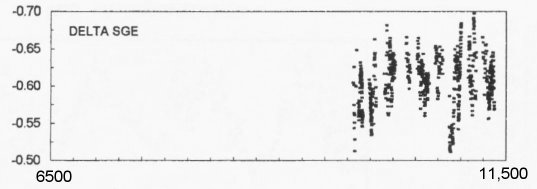
 |
The visual variations of Delta Sagittae are plotted against the Julian date from March 10, 1986, to November 17, 1999. Add 2440000 for a running count of days from January 1, 4713 BC. (From J. R. Percy, J. B. Wilson, and G. W. Henry in the Publications of the Astronomical Society of the Pacific, vol 113, p. 983, 2001.) |